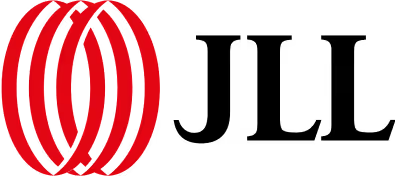Lessons in Business Development
The CIM Peak Platform is the culmination of an idea that started several years ago. I could see that there was a huge opportunity for digital transformation in the built environment, a gap for business development in this sector. Whether that was understanding of the plant and equipment were operating optimally, determining the root cause of some failure or disruption, or knowing if technicians and engineers were giving the best advice, I could see that there was a better way.
That started me on a quest to learn what data all that equipment could deliver and then finding ways to extract it. I wanted to make it usable and create a platform to give all stakeholders, from investors to facilities managers, the tools they needed to ensure everything was working at its peak performance. I also wanted to create a platform with the added benefit of reducing emissions, so it would be better for people and the planet’s longevity.
But no visionary and entrepreneurial journey is easy, especially when embarking on tackling a challenge that had never been solved before. It took a lot of perseverance and I learned many lessons along the way. Here are the five things I wish I’d known when I first embarked on this adventure, with the benefit of hindsight.

1. Start with the product
As a founder and entrepreneur, it’s tempting to start chasing sales early on in the business development process in order to start getting payback as early as possible. But the reality is that technical problems, like extracting, normalising and presenting complex data in a usable way, require technical solutions.
This is why I worked on the CIM Peak Platform by day and had a job at a distribution centre at night, stuffing satchels for a freight company. Sales don’t fix problems. By focusing on getting the product right rather than chasing customers too early, you can take time to solve complex problems.
Most of a product’s value is created by having a relentless focus on the product from an early stage, without distractions. And that includes not looking for funding too early in the journey. By bootstrapping, I was able to stay focussed on building the platform rather than chasing and appeasing investors.

2. Be kind to yourself
Worrying never solved anything and nobody ever worried themselves to success. The mental energy spent worrying distracts you from solving complex problems.
When we worry about something that can turn into fear and, in turn, create anger. And anger is a huge creativity killer. Create the space to manage negative emotions and then focus your energy in positive ways.
3. It’s a marathon, not a sprint
Founder burnout is real and can destroy a great idea and product before it ever gets off the ground. In the early days of a start-up, there are lots of things to think about. There’s funding, watching what competitors are doing, and trying to reach sales targets.
It’s important, as a founder, to have something outside the business that lets you recharge your batteries and clear your mind. For me, that’s cycling but whether it’s running, yoga, drawing, doing jigsaw puzzles or something else, you need to find an activity that takes you away from the business and gives you time to restore your energy and clear your mind.
4. Don’t catastrophise
Not every barrier in the business development process is an emergency or disaster. If you receive some criticism or feedback, listen and reflect. If there is insight, extract the learning, but never take it personally. Take a breath before reacting. Put yourself in their shoes and ask yourself what the critic is really saying. While your startup or business might be intensely personal, it’s likely just another product or service for that person.
It’s important to be in tune with your own sense of flow. This way, when something unexpected happens, you can take it in your stride and plan your way through. When I look back at incidents that seemed like looming disasters at the time, hindsight tells me that they weren’t nearly as bad as they seemed at that moment.

5. Build a great team
There are two things that kill fast-growing companies: cash flow and dysfunctional boards.
When you choose your board members and chairperson, you are not looking for specific domain knowledge. The key ingredient is wisdom. You want board members who can advise you when navigating challenging business situations. You don’t want board members who want to check your code and help build the UX.
As a CEO, it’s critical to invest in the relationship with the chairperson. If that relationship turns sour or never works, business failure is almost inevitable.
CIM’s first key hires were former Atlassian and Goldman Sachs people who never had to work again if they didn't want to. They joined CIM because they believed in the vision and genuinely wanted to build clean technology solutions that can help save the planet. Six years on, they’re still with me on this journey and passionate about what we’re trying to achieve.
Reaching a $100M valuation, in our fifth year, is a significant milestone. When I started CIM, I was a newly arrived immigrant with just $5000 in my pocket. I needed to find a home for my family and schools for my kids. My partner was incredibly supportive, but I had to work at the distribution centre at night to keep food on the table while I worked to turn CIM into the thriving business it is today.
________________
CIM's PEAK Platform is a best-in-class building analytics SaaS technology, improving efficiency, sustainability, and tenant comfort across property portfolios. Discover more by watching a demo.



.webp)





